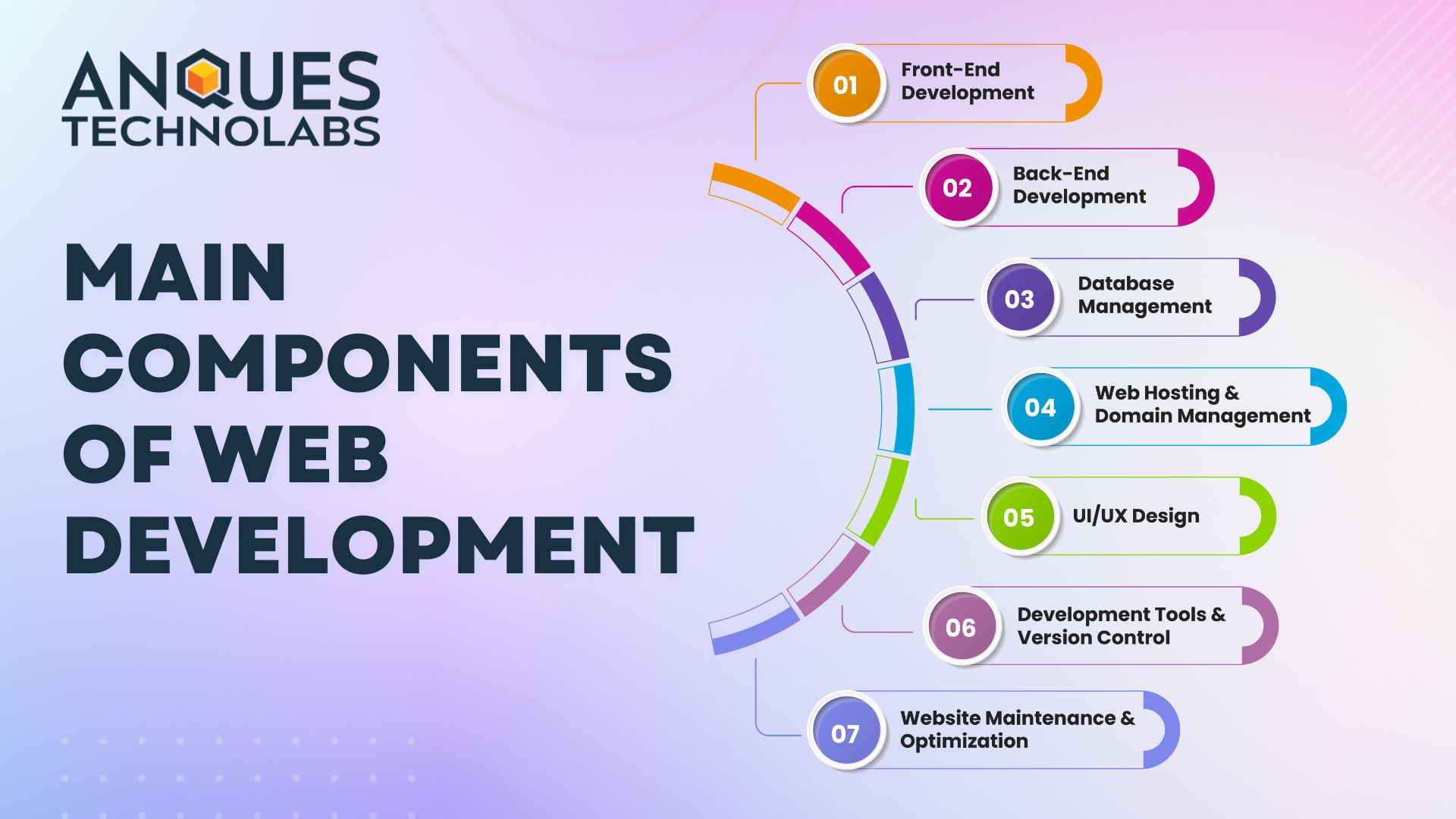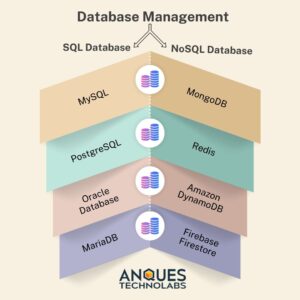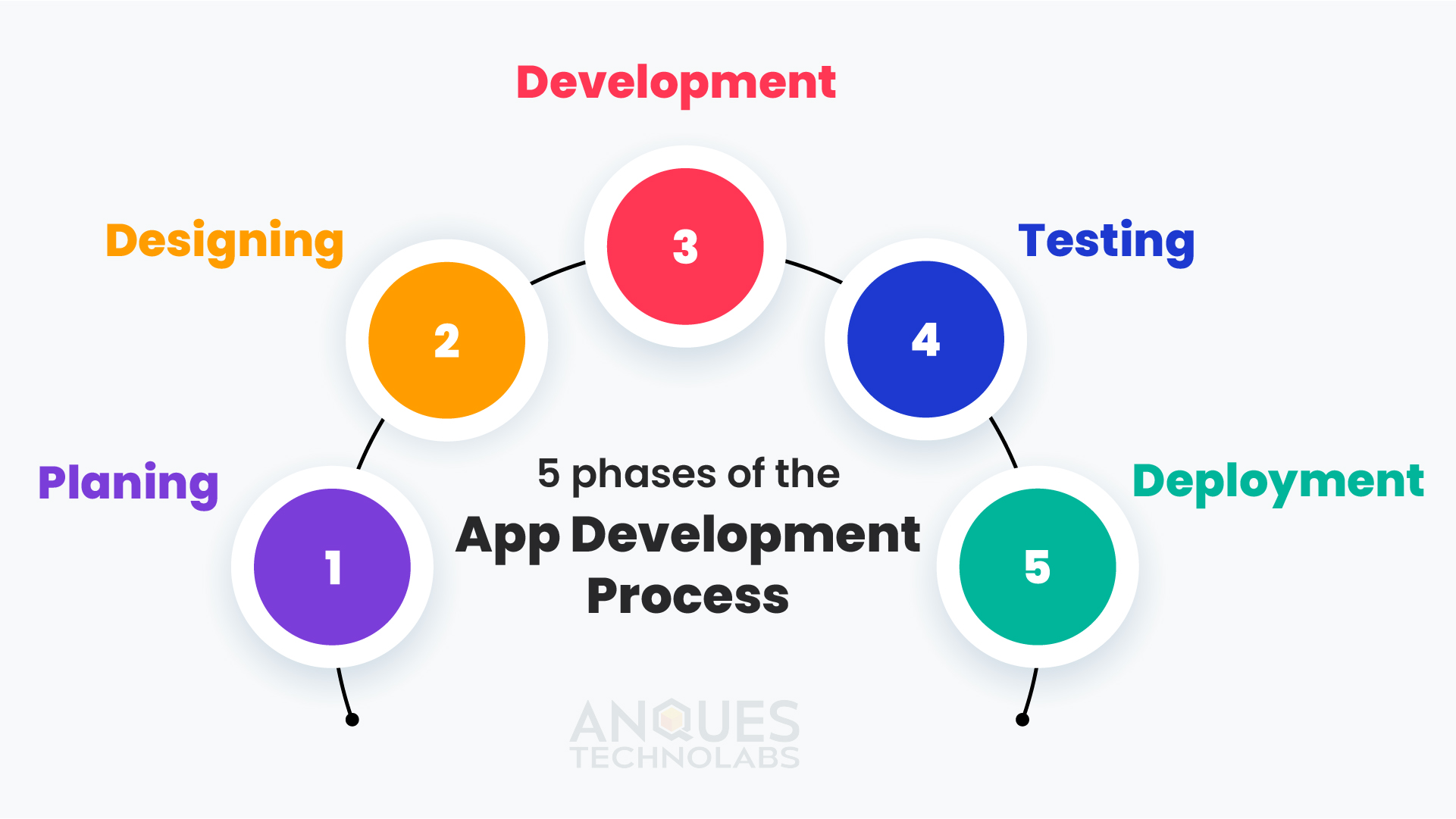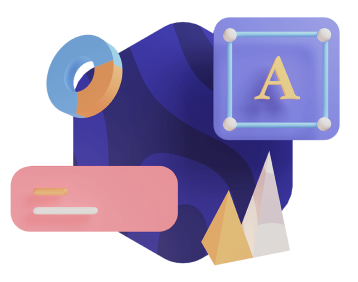In today’s competitive digital world, having a well-designed, functional website is no longer a choice; it is required. Whether you manage a small local business or a multinational enterprise, your website is usually the first point of contact for potential customers. But, what goes into creating a professional website? It all starts with understanding the main components of web development, including design, coding, and database integration.
1. Front-End Development (Client-Side Development)
The front-end of a website is what visitors view and interact with. The visual elements include the layout, buttons, colours, text, and animations. Front-end development includes everything from the home page to the product catalogue.
Key Technologies Used:
- HTML (HyperText Markup Language): The foundation for structuring web content.
- CSS (Cascading Style Sheets): Responsible for styling elements — colors, fonts, layouts.
- JavaScript: Adds dynamic features like sliders, pop-ups, interactive forms.
- Frameworks & Libraries:
- React.js: Efficient for building fast, scalable user interfaces.
- Vue.js, Angular: Other powerful tools for developing responsive front-ends.
Why It Matters:
A solid front-end, as part of the main components of web development, creates a great user experience (UX), allowing users to smoothly explore and communicate with your business. A poorly designed front-end can lead to high bounce rates and lost customers.
2. Back-End Development (Server-Side Development)
While the front-end is the visible part, the back-end is the engine powering everything behind the scenes. It handles data processing, server communication, user authentication, and ensures that user actions on the front-end trigger the correct responses.
Key Components:
- Server-Side Languages:
- PHP, Python, Node.js, Ruby on Rails — handle logic, processing, and database interactions.
- Frameworks:
- Laravel (PHP), Django (Python), Express.js (Node.js) — speed up development and offer secure structures.
- Server Management:
- Web servers like Apache, Nginx process requests and deliver web pages to users.
Example:
When a user submits a form to request a service, the back-end validates the information, stores it in a database, and may send an email confirmation – all in the background.
3. Database Management
A database is where your website’s data is saved, including user accounts, product listings, content, and transactions. Efficient database management ensures quick access to data, data integrity, and scalability as your website improves.
Types of Databases:
- Relational Databases (SQL):
- MySQL, PostgreSQL — ideal for structured data with relationships.
- NoSQL Databases:
- MongoDB, Firebase — great for flexible, scalable data storage.
Why It Matters:
A well-structured database enables users to look for products, log in to their accounts, and place orders quickly and easily.
4. Web Hosting and Domain Management
To make your website visible on the internet, you will need web hosting (server storage space) and a domain name (your website’s address).
Components:
- Web Hosting Providers:
- Shared Hosting: Affordable, best for small websites (e.g., Bluehost, HostGator).
- VPS / Dedicated Servers: For high-traffic, resource-heavy sites.
- Cloud Hosting: Scalable and reliable (e.g., AWS, Google Cloud, DigitalOcean).
- Domain Name:
- A unique name must be registered and renewed on a regular basis.
- SSL Certificate:
- Ensures secure data transmission (HTTPS). Builds trust with users.
Pro Tip:
A fast, secure, and reliable hosting environment improves website speed and SEO rankings.
5. Website Architecture & UI/UX Design
Before any coding begins, the website requires a plan. Here’s where website architecture and design come into play.
Steps Involved:
- Wireframing: Sketching the website’s layout, navigation flow, and key elements.
- Mockups/Prototypes: Visual representations of how the site will look.
- UI (User Interface) Design: Designing the visual elements — typography, color schemes, buttons.
- UX (User Experience) Design: Focusing on usability, intuitive navigation, and engagement.
Why It Matters:
A website that’s easy to navigate and visually appealing keeps visitors engaged for longer and increases conversion rates.
6. Development Tools & Version Control
Developers use a variety of tools to write code, manage versions, and test functionality.
Popular Tools:
-
Code Editors:
- Visual Studio Code, Sublime Text.
-
Version Control Systems:
- Git: Tracks code changes, allows collaboration.
- GitHub/GitLab: Hosting platforms for code repositories.
-
Testing Tools:
- Selenium (automated testing), Jest (JavaScript testing).
Why It Matters:
These tools ensure code quality, facilitate teamwork, and streamline development.
7. Website Maintenance & Optimization
Web development doesn’t end with a website launch. Ongoing maintenance is essential to keep your site fast, secure, and updated.
Tasks Include:
- Fixing bugs or errors.
- Updating content and software.
- Improving site speed (performance optimization).
- Security monitoring.
- SEO updates for better search engine visibility.
Why It Matters:
A well-maintained website ensures maximum uptime, better user experience, and continued business growth.
Conclusion
A successful website is created through teamwork between designers, developers, and strategists — all working together across multiple components. From planning and design to coding, hosting, and maintenance, each stage plays a critical role.
Understanding the main components of web development allows businesses to make informed decisions when investing in a website. At Anques Technolabs, we specialize in creating tailored web solutions that deliver results. Whether you need a simple informational site or a complex eCommerce platform, we have the expertise to bring your vision to life.
FAQs
Q1. What are the seven main components of web development?
Web development involves key components like HTML for structuring content, CSS for styling and layout, JavaScript for interactivity, and backend technologies such as databases and server-side programming to handle data and functionality behind the scenes.
Q2. Can I build a website without coding?
Yes, website builders like Wix or WordPress offer no-code solutions, but for custom, scalable websites, professional development is recommended.
Q3. Do I need both front-end and back-end developers?
Yes, unless you’re building a very simple static site. Full-stack developers can handle both, or you can hire specialists for each.
Q4. How do I choose the right hosting for my website?
It depends on your needs. For small sites, shared hosting works; for high-traffic sites, consider cloud or dedicated hosting.
Q5. Why is responsive design important?
Responsive design ensures your website works well on all screen sizes, improving user experience and SEO.
Q6. How long does it take to develop a website?
It depends on complexity. A basic site may take 2-4 weeks, while a complex, dynamic site could take 2-3 months or more
















